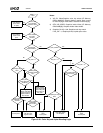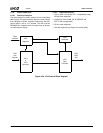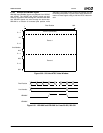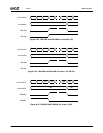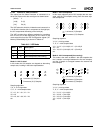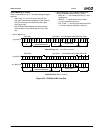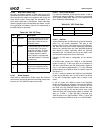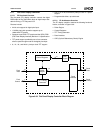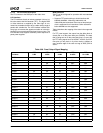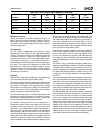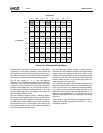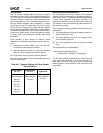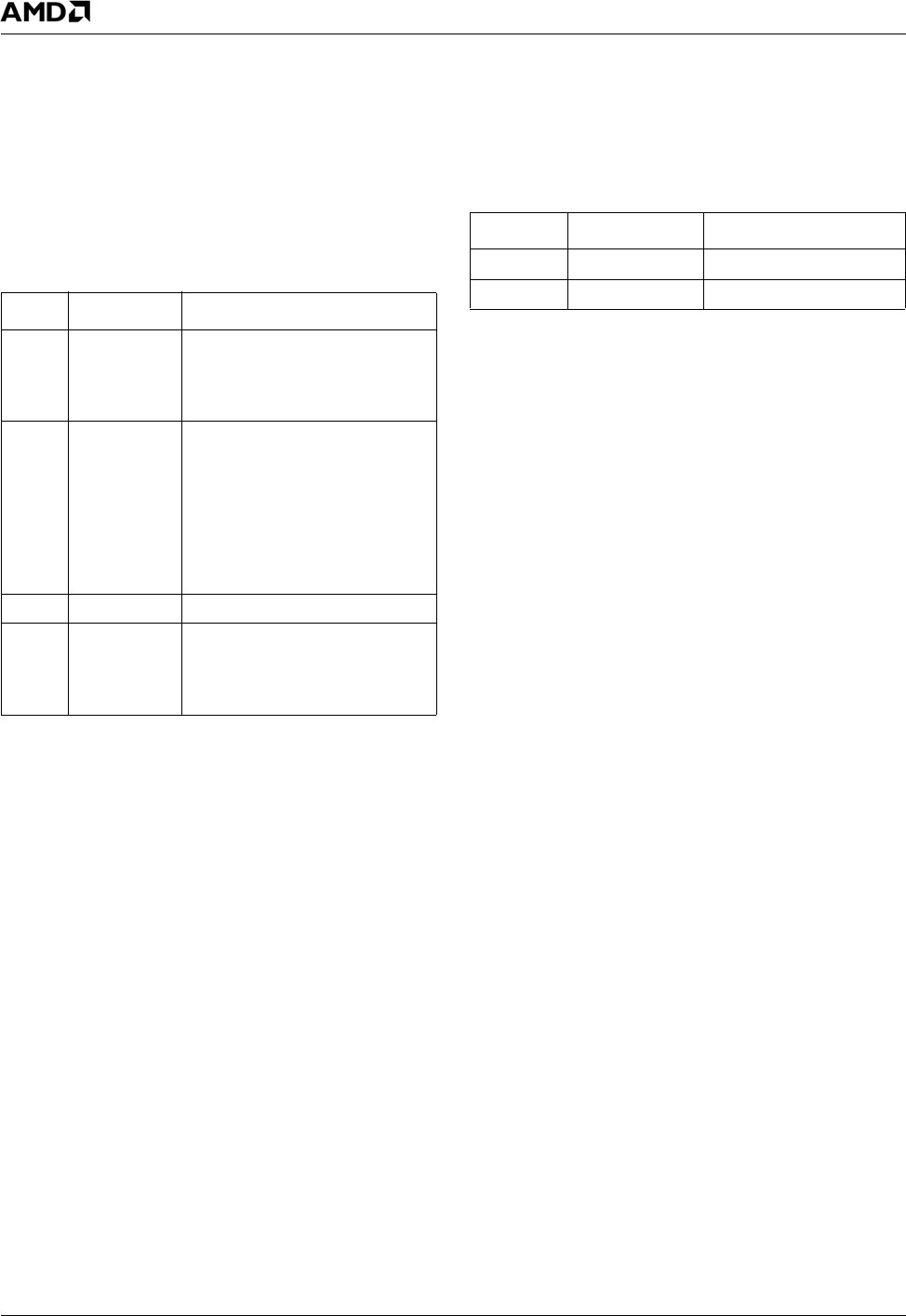
404 AMD Geode™ LX Processors Data Book
Video Processor
33234H
6.7.6.6 New VIP 2.0 Video Flags
Four bits are defined (shown in Table 6-64) by the VIP
specification that allow the VIP slave to communicate field/
frame-specific information to the graphics chip during the
video stream output. These flags are embedded in the
lower nibble of the SAV or EAV header. These video flags
allow the graphics chip to handle Bob and Weave, as well
as 3:2 pull-down in hardware. Only bit 3 is implemented in
the AMD Geode LX processor.
6.7.6.7 BT.601 Support
When VOP is configured for BT.601 mode, the HSYNCs
and VSYNCs are used to determine the timing of each data
line sent out. The SAV/EAV codes are not used.
6.7.6.8 VIP 2.0 Level System
For even field detection, some devices require a shift in
VSYNC with respect to HSYNC. This shift is programmed
at DC Memory Offset 080h. Also for correct odd/even field
shift, VP Memory Offset 800h[6] = 1.
6.7.6.9 VBI Data
Vertical Blanking Interval (VBI) data is not part of the active
video (i.e., not directly displayed). This data is sent
between fields of active video data during vertical blanking.
VBI data has many uses: closed captioning, timecodes,
teletext, etc. Although there are some specified standards
with respect to closed captioning which are generally
decoded at the TV, basically, as long as the data is sent
and received correctly, there are no restrictions.
Indication of VBI data is configurable for the different
modes.
In BT.656 mode, typically the TASK bit in the EAV/SAV
header is fixed at 1. In this case, there is no indication of
VBI data. If the VBI bit in the VOP Configuration register is
set to 1 (VP Memory Offset 800h[11] = 1), then VBI data
will be indicated by a TASK bit value of 0 (active video has
the value of 1).
In VIP 1.1 mode, by definition the TASK bit in the EAV/SAV
header is 0 for VBI data, and 1 for active video. The VBI bit
in the VOP Configuration register has no effect in this
mode.
In VIP 2.0 mode, the TASK bit value in the EAV/SAV
header is configurable by selecting a value for the TASK bit
in the VOP Configuration register. If it is desired to have
the TASK bit in the EAV/SAV header indicate VBI data,
then setting the VBI bit will use the inverse value of the
TASK bit in the VOP Configuration register to indicate VBI
data (i.e., if TASK = 1, then VBI data is indicated by a
TASK bit value of 0 in the EAV/SAV, if TASK = 0, then VBI
data is indicated by a TASK bit value of 1 in the EAV/SAV).
Table 6-64. SAV VIP Flags
Bit Flag Description
3
NON_INT 1 indicates that the video is from
a non-interlaced source. 0 indi-
cates that the video is from an
interlaced source.
2
REPEAT 1 indicates that the current field
is a repeat field. This occurs
during 3:2 pull-down. This flag
enables a VIP master to drop
the repeat field in the weave
mode. This bit is not supported
in the AMD Geode™ LX proces-
sor (tied to 0).
1 RSVD Reserved.
0
EXT_FLAG 0 indicates no extended flags.
This bit is not supported in the
AMD Geode LX processor (tied
to 0).
Table 6-65. VOP Clock Rate
Level Video Port Max. PIXCLK
I 8-bit 75 MHz
II 16-bit 75 MHz



